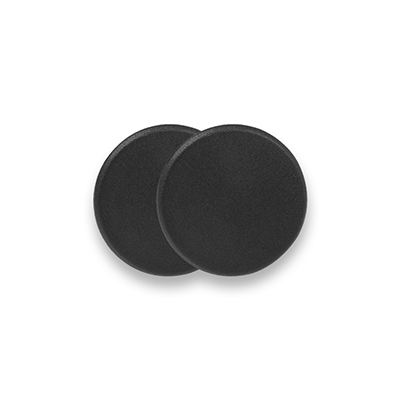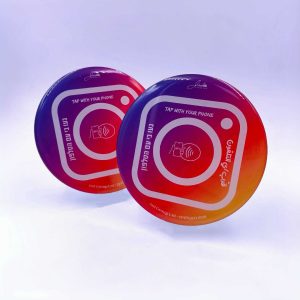Introduction
The Healthcare industry has implemented technology to enhance patient service delivery. Utilizing RFID tag technology to track items in hospitals has significantly improved service delivery.
RFID technology has numerous applications in healthcare. This variety makes it one of the most influential and dynamic hospital tools.
It can be used to track patients, surgical instruments, and laundry, among other things. This article lists seven of the most prevalent RFID hospital applications. Keep reading.
Seven Hospital Applications of RFID Technology
1. Inventory Management in the Department of Medicine and Pharmaceuticals
To treat a variety of medical conditions, hospitals stock voluminous quantities of medicines. As a result, tracking can be difficult, especially in hospitals with numerous liquid medications.
Utilizing manual count and barcode techniques is time-consuming and may result in inventory errors. This difficulty has inspired innovation in the tracking industry. Numerous manufacturers are developing RFID tags to facilitate the tracking process.
While RFID technology provides an ideal solution for tracking, most tags do not function optimally with liquid products. This limitation presents the pharmaceutical industry with an additional significant obstacle.
Thankfully, RFID tag manufacturers are creating tags that work well with liquid products. Consequently, you should only select a customized RFID that will allow you to track all products regardless of their condition.
RFID tags compatible with liquids offer the following advantages:
Enhances the precision of pharmaceutical data Eliminates procurement delays, which would otherwise result in ineffective treatment
Constant data collection via fixed RFID readers ensures real-time stock monitoring.
Reduces the time and money required for inventory management.
Moreover, RFID tags enable hospitals and pharmaceutical companies to authenticate their products and eliminate market-wide counterfeits.
To accomplish this, manufacturers will affix an RFID tag and specific authentication data to the original medicine bottle/box.
Therefore, the hospital staff will simply use an RFID reader to verify the product’s authenticity. In some instances, manufacturers employ RFID labels that cannot be tampered with.
Patient and Personnel Tracking
Hospitals require a robust security system to ensure the safety of their patients and employees at all times. There is a need to implement a tracking system that provides real-time, accurate information.
The majority of hospitals currently use passive and active RFID tags to track patients and personnel. Utilizing these tags provides hospitals with numerous benefits, including:
Easy verification of patient information
Patients’ safety is assured because their locations can be determined in real-time.
Reduces wait times and other service delivery bottlenecks
Utilization of RFID Tags in Patient and Employee Management
Patients’ records are primarily verified and managed using passive RFID tags. Most hospitals prefer to use wristbands because they are less likely to be lost.
The wristband contains an RFID tag with the patient’s entire medical record. It will maintain all patient-specific records, complementing the doctors’ and nurses’ notes.
Thus, it will be impossible for nurses to mistakenly switch a patient’s file, which could result in incorrect treatment and death.
Utilization of Active RFID Tags for Patient and Employee Management
In hospitals, active RFID tags are used to track the movement of patients and staff. The rapid adoption of Real-Time Location RFID Systems (RTLS) to identify workflow interruptions has occurred recently. This technology ensures that patients receive timely, appropriate care.
In this instance, both patients and personnel will be issued badges embedded with RFID chips. The tags will help monitor the amount of time patients spend in each office. The systems will identify delays, enabling management to address the issues in real-time.
Additionally, the RTLS system is useful for newborn baby tracking. This method contributes to the reduction of child theft and the provision of superior medical care.
To accomplish this, doctors attach RFID RTLS tags to the newborns’ legs. As soon as the child approaches the door, an alarm will sound and the door will automatically lock. In addition, removing the tag from the child’s leg will trigger an alarm that indicates the child’s location.
3. Observing the Sterilization of Surgical Instruments
To prevent infections that can progress to sepsis, surgical instruments should always be clean and sterile. All instruments must be cleaned, disinfected, and sterilized in a timely manner.
Scissors, scalpels, retractors, and clamps are among the instruments that should be readily available for surgical procedures. These instruments are contaminated with bacteria that can be transferred to the next patient, resulting in medical complications.
To prevent this, hospitals use RFID technology to track instruments and ensure that they have been sterilized.
However, the majority of surgical instruments are metallic, limiting the utility of RFID tags. Therefore, you should always choose RFID tags that function optimally on metallic surfaces.
The RFID tag is embedded with a chip containing cleaning instructions for specific surgical instruments. The tag will record all pertinent information, including the autoclave and time of sterilization.
When employing this strategy, you must keep in mind the following points:
Not all RFID tags can withstand autoclaving.
Not all RFID tags function optimally on metal surfaces.
Consequently, you must always select a tag that has been modified to withstand these two environments. We advise you to contact the manufacturer if you have any questions.
4.Inventory Management of Items with a Single-Use
Several items in a hospital are designed for single use. It is simple for products to go out of stock without the procurement officer’s knowledge if an inventory error occurs.
Included in this category are gloves, plastic vials, and gauze. You understand that these items are necessary for service delivery. Consequently, they should always be accessible in any hospital.
However, because the products are relatively inexpensive, it would be impractical to use expensive price tags. Therefore, hospitals should utilize RFID inlays, which are efficient and cost-effective.
Using RFID to track single-use items will provide the following advantages to any hospital:
Simple to Track Products Since these items are equipped with an RFID tag, they can be stored in a designated area with an RFID reader. Using an RFID reader, disposable gloves can be stored on shelves and vending machines, for instance. The reader will relay real-time stock balance information.
Simple to Customize the Inventory. Most hospitals have safeguards against the theft and misuse of single-use supplies. One of the most reliable ways to accomplish this is by integrating the RFID-enabled badges of the staff with the inventory. As a result, every time an employee uses the vending machine, the RFID reader will record the transaction. Thus, the hospital will be able to determine how many items each staff member utilizes each month or other time period.
5. Asset Monitoring
To ensure the safety of patients, hospitals should have maximum security. Authentication of a person’s identity is required prior to admittance into any given room.
This will eliminate the following risks for the hospital:
Unauthorized personnel Patients who sneak out of their rooms
Prevent the spread of infection to sterile areas of high concentration.
Prevents individuals from wandering, which can result in accidents and injuries
To achieve access control, RFID badges are issued to authorized hospital personnel. Additionally, the door features an RFID reader. Therefore, the staff will only need to wave the badge to open the door.
6.Control of access/security
To ensure the safety of patients, hospitals should have maximum security. Authentication of a person’s identity is required prior to admittance into any given room.
This will eliminate the following risks for the hospital:
Unauthorized personnel Patients who sneak out of their rooms
Prevent the spread of infection to sterile areas of high concentration.
Prevents individuals from wandering, which can result in accidents and injuries
To achieve access control, RFID badges are issued to authorized hospital personnel. Additionally, the door features an RFID reader. Therefore, the staff will only need to wave the badge to open the door.
7.Laundry Keeping Tabs
Patients in hospitals should be assured of the highest level of cleanliness. This is a certain method of preventing cross-contamination, thereby facilitating the patient’s recovery.
Bedding, towels, and blankets must always be cleaned and sanitized before being used by the next patient.
In order to accomplish this, the hospital needs an effective RFID system. All of these items will be embedded with RFID tags that indicate their status in real-time.
Conclusion
The tracking system in a hospital must work well to make sure that patients get the best care possible. Utilizing RFID technology is one of the most effective tracking methods. This article details everything that can be tracked in hospitals using RFID tags.
















